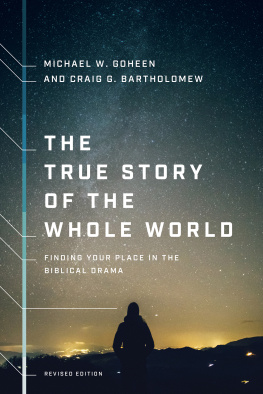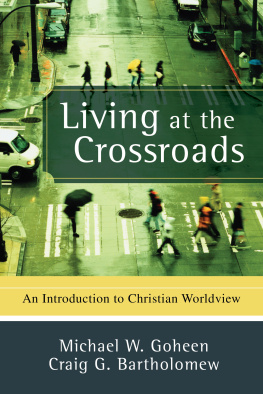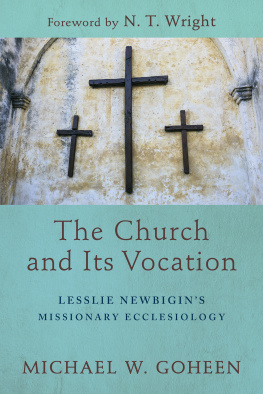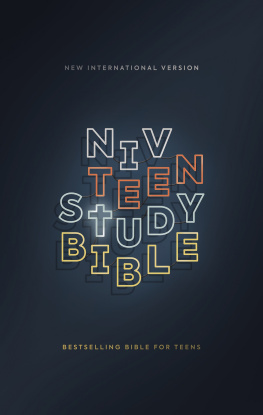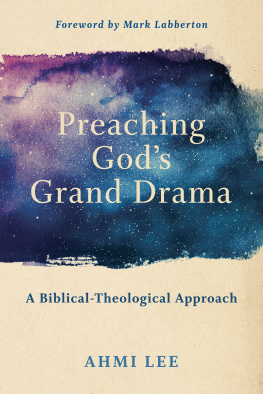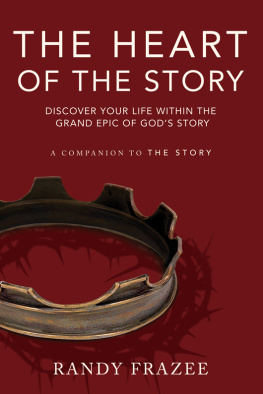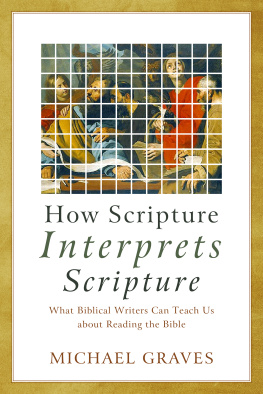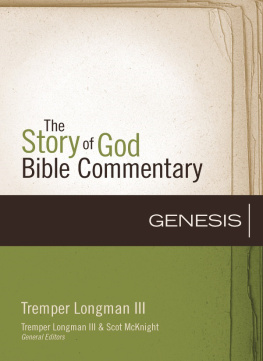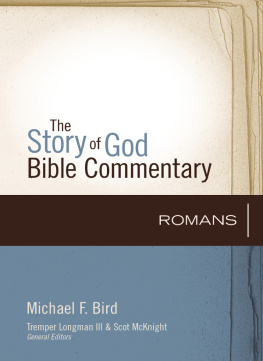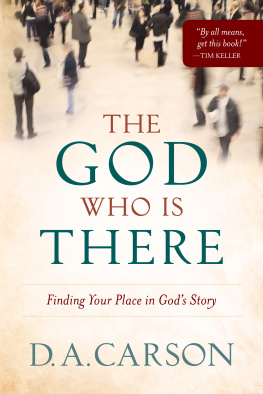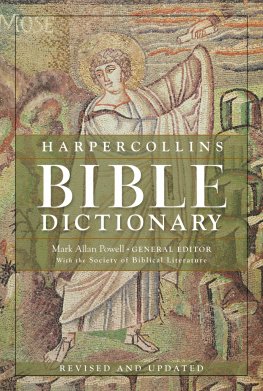Preface
Some years ago Bob Webber and Phil Kenyon issued a passionate clarion call to the evangelical community. It was a summons to grow in faithfulness to the gospel in the midst of huge threats facing the Christian faith. After affirming the authority of Scripture and noting the myriad of global challenges facing the evangelical church at the beginning of the twenty-first century, they say, Today, as in the ancient era, the Church is confronted by a host of master narratives that contradict and compete with the gospel. The pressing question is: Who gets to narrate the world?
They believe, and rightly so, that if the Christian church is to be faithful in the midst of competing stories, this question must be answered unequivocally in terms of the biblical narrative: the Bible tells the true story of the whole world . Thus their first section is called On the Primacy of Biblical Narrative. Getting this straight is the crucial starting point. The following sections on the church, theology, worship, spiritual formation, and the believers life in the world are all tied to the biblical story: the church finds its identity in the role it plays in the biblical story; theology deepens our understanding of this story; worship enacts and tells this story; spiritual formation equips the church to embody this story; and the believers life in the world, including all of public life, is a witness to the truth of this story.
Our passion in this book is the same: that people learn to read the Bible as it was meant to be readas the true story of the whole world. The Bible narrates the story of Gods journey on that long road of redemption. It is an unfolding drama of Gods action in history for the healing of the whole world. The Bible is not a mere jumble of history, poetry, lessons in morality and theology, comforting promises, guiding principles, and commands; it is fundamentally a unified and coherent narrative that records the unfolding of Gods purpose. Every part of the Bibleeach event, book, character, command, prophecy, promise, and poemmust be understood as part of one story line. We invite readers to make it their story, to find their place in it, and to indwell it as the true story of the world.
There are three important emphases in this book. First, we stress the comprehensive scope and restorative nature of Gods redemptive work. The biblical story does not move toward the destruction of the world and our individual rescue to heaven. It culminates in the restoration of the entire creation and all of human life to its original goodness.
Second, we emphasize our place within the biblical storythat is, the era of biblical history in which we live. Where do we belong in this story? How does it shape our lives in the present?
Third, we highlight the centrality of mission within the biblical story. The Bible narrates Gods mission to restore the creation. God chooses Israel as a people to embody his creational purpose and design for humanity for the sake of the whole world. They are blessed to be a blessing. The Old Testament narrates the history of Israels response to their divine calling. Israel fails, and the Father sends Jesus, who takes upon himself the missionary vocation that had been given to Israel. Jesus embodies Gods purpose for humanity and accomplishes victory over sin at the cross, inaugurating the new creation in his resurrection. He sends his church with the mandate to continue that same mission. And so, mission defines the life of Gods people today. In our own time, standing as we do between Pentecost and the return of Jesus, we as the people of God are to witness in life, deed, and word to the rule of Jesus Christ over all life.
In this book, we have borrowed N. T. Wrights helpful metaphor of the Bible as a drama. But whereas Wright speaks of five acts (creation, sin, Israel, Christ, and church), we tell the story in terms of six acts. We add the coming of the new creation as the final act of the biblical drama. We have also added a prologue, which addresses in a preliminary way what it means to say that human life is shaped by a story.
This is an updated, revised edition of a shorter version of The Drama of Scripture (Baker Academic, 2004) that was previously published by SPCK (2006) and then by Faith Alive (2009). The title remains the same as the Faith Alive version: The True Story of the Whole World : Finding Our Place in the Biblical Story .
This shorter edition is suitable as a study version for individuals and small groups. Three things distinguish True Story of the Whole World from the longer Drama of Scripture . First, it is significantly shorterabout two-thirds the length of Drama . Second, the majority of the explanatory footnotes, some of the diagrams, and all of the maps have been dropped. Third, each act explores the contemporary significance of that part of the story for our lives today and ends with questions for discussion.
An accompanying website provides a growing number of resources that may help you use this book: a course syllabus, adult Bible study class schedules of various lengths, PowerPoint slides, more study questions, articles, links, a reading schedule for a thirteen-week course, supplementary reading, video suggestions, and more (www.missionworldview.com).
We are deeply grateful and humbled that so many have found the various versions of this book to be helpful; it has been used beyond our wildest expectations in many settings and in many countries. We are thankful it has made a small contribution to a recovery of the Christian faith as it really is in Scripturethe true story of the whole world. We remain indebted to our friend Doug Loney, who has given to these manuscripts much time as a skilled writer and editor to help make it a lively and coherent text.

